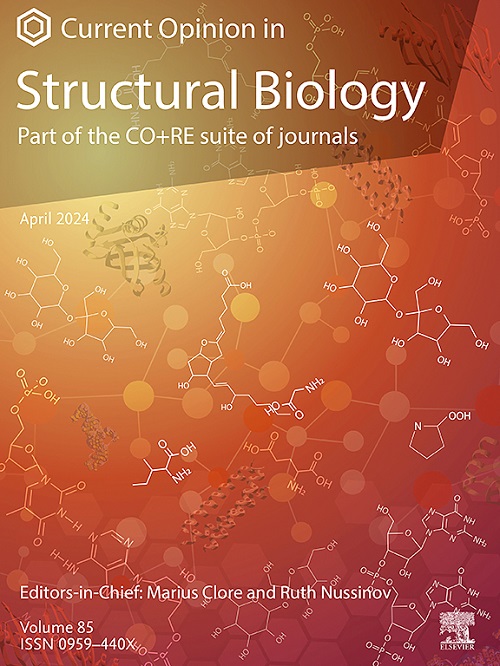Challenges and compromises: Predicting unbound antibody structures with deep learning
IF 6.1
2区 生物学
Q1 BIOCHEMISTRY & MOLECULAR BIOLOGY
引用次数: 0
Abstract
Therapeutic antibodies are manufactured, stored and administered in the free state; this makes understanding the unbound form key to designing and improving development pipelines. Prediction of unbound antibodies is challenging, specifically modelling of the CDRH3 loop, where inaccuracies are potentially worse due to a bias in structural data towards antibody-antigen complexes. This class imbalance provides a challenge for deep learning models trained on this data, potentially limiting generalisation to unbound forms.
Here we discuss the importance of unbound structures in antibody development pipelines. We explore how the latest generation of structure predictors can provide new insights and assess how conformational heterogeneity may influence binding kinetics. We hypothesise that generative models may address some of these issues. While prediction of antibodies in complex is essential, we should not ignore the need for progress in modelling the unbound form.
挑战与妥协:用深度学习预测非结合抗体结构。
治疗性抗体是在游离状态下制造、储存和施用的;这使得理解未绑定表单成为设计和改进开发管道的关键。非结合抗体的预测具有挑战性,特别是CDRH3环的建模,由于结构数据偏向于抗体-抗原复合物,其不准确性可能更差。这种类不平衡为在这些数据上训练的深度学习模型提供了挑战,可能会限制对未绑定表单的泛化。在这里,我们讨论非结合结构在抗体开发管道中的重要性。我们探讨了最新一代的结构预测因子如何提供新的见解,并评估构象异质性如何影响结合动力学。我们假设生成模型可以解决其中的一些问题。虽然复杂抗体的预测是必不可少的,但我们不应忽视在非结合形式建模方面取得进展的需要。
本文章由计算机程序翻译,如有差异,请以英文原文为准。
求助全文
约1分钟内获得全文
求助全文
来源期刊

Current opinion in structural biology
生物-生化与分子生物学
CiteScore
12.20
自引率
2.90%
发文量
179
审稿时长
6-12 weeks
期刊介绍:
Current Opinion in Structural Biology (COSB) aims to stimulate scientifically grounded, interdisciplinary, multi-scale debate and exchange of ideas. It contains polished, concise and timely reviews and opinions, with particular emphasis on those articles published in the past two years. In addition to describing recent trends, the authors are encouraged to give their subjective opinion of the topics discussed.
In COSB, we help the reader by providing in a systematic manner:
1. The views of experts on current advances in their field in a clear and readable form.
2. Evaluations of the most interesting papers, annotated by experts, from the great wealth of original publications.
[...]
The subject of Structural Biology is divided into twelve themed sections, each of which is reviewed once a year. Each issue contains two sections, and the amount of space devoted to each section is related to its importance.
-Folding and Binding-
Nucleic acids and their protein complexes-
Macromolecular Machines-
Theory and Simulation-
Sequences and Topology-
New constructs and expression of proteins-
Membranes-
Engineering and Design-
Carbohydrate-protein interactions and glycosylation-
Biophysical and molecular biological methods-
Multi-protein assemblies in signalling-
Catalysis and Regulation
 求助内容:
求助内容: 应助结果提醒方式:
应助结果提醒方式:


